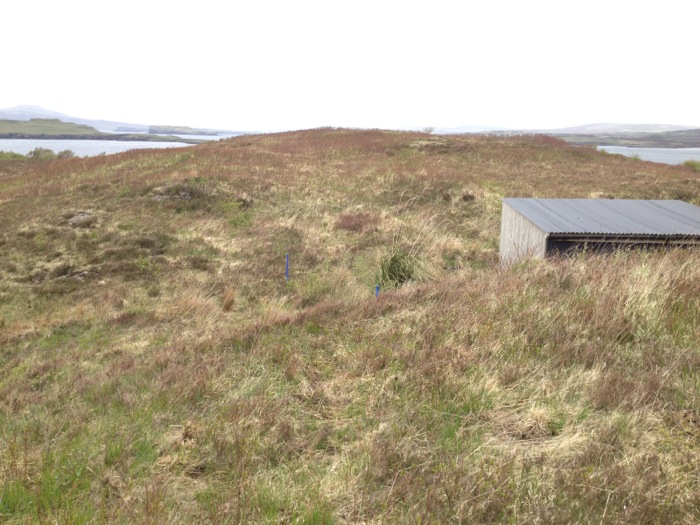Rock Breaking
First Stage Groundworks
06/06/15 18:30 Filed in: Groundworks

It took Sean about five days in total to establish a smooth track and also to scrape back the house site to the rock below the peat. This involved a day or so of rock breaking with a large hydraulic pick on the end of the 15 ton digger. The hire of Sean and the digger cost £30 an hour and £40 an hour when breaking rock. In establishing the track Sean had carefully removed the top 600mm or so of peat, complete with plants, bog myrtle, small rowan bushes and placed these carefully by the side of the track. Treating the ground in this way allows the peat and plants to survive intact.
He said we could then decide if we then want to place it back to make a smaller track to the completed house. He said he had learnt this technique while working on the large wind farms on Skye, where the contractors were strict about restricting damage to the soil and fauna. He assured us that it really works as a technique. Indeed all of the grass and shrubs are still thriving.
The rock that was broken was used to smooth and grade the track down to the house site. On the fourth day, Simon who is working with me, marked out the position of the trenches, holes for the piers upon which the building would stand. They were initially separate holes to bedrock for each pier but as Sean was excavating he found a small band of clay that needed to be dug out which then made us decide that four trenches across the width of the build would allow us a better way of setting the foundations.

Despite a survey before and a structural engineer on site this small band of clay hadn't been discovered. The trenches were deeper where the clay band had been found, this would require more concrete to get the level that we needed for all of the piers. The ground work is where costs can be unpredictable as you never completely know what you will find until the digger digs. This was not a big problem but required a solution that became four trenches with three piers across in each trench, The solution had the building on bedrock, but we would need more concrete to establish the level across the trenches. This probably increased costs at the concrete stage by £300.